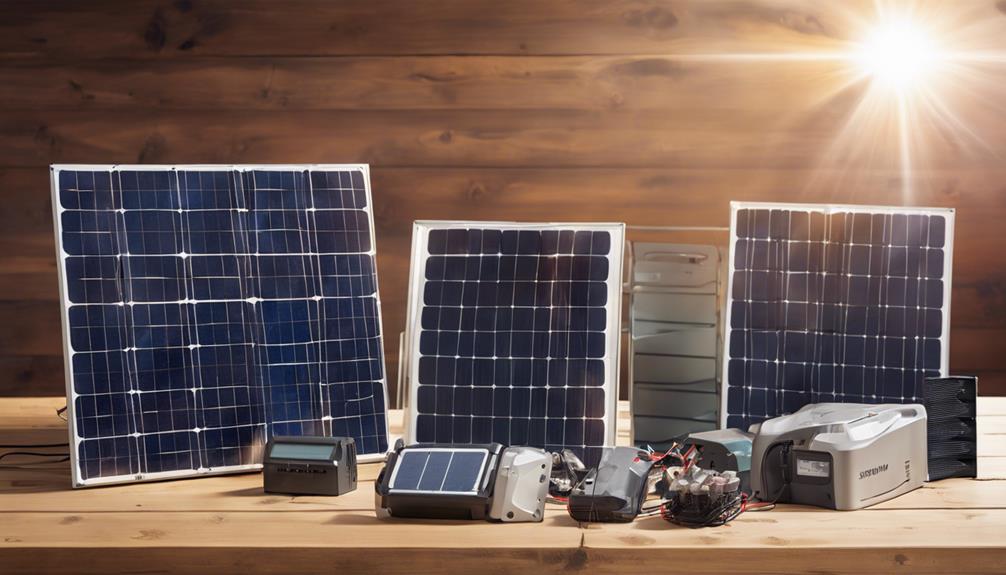
Solar panels have revolutionized the way we harness renewable energy, making it essential for homeowners and businesses alike to understand their voltage and current output. In this blog post, we will delve into the intricacies of solar panel voltage and current output, exploring their significance, how they work together, and what to consider when choosing solar panels for your energy needs.
The Basics of Solar Panel Voltage and Current Output
Solar panels convert sunlight into electricity through the photovoltaic effect. When sunlight strikes the solar cells in a panel, it excites electrons, generating direct current (DC) electricity. The two critical electrical parameters of solar panels are voltage and current output. Voltage refers to the electric potential difference, while current measures the flow of electric charge. Understanding these concepts is fundamental to optimizing your solar energy system.
How Solar Panel Voltage is Measured
Solar panel voltage is typically measured in volts (V) and indicates the potential energy produced by the solar panel. Each solar panel has a specific voltage rating, which is determined by the number of cells it contains and their configuration. A standard solar panel usually operates at around 18 to 22 volts under optimal sunlight conditions. However, the actual voltage output can vary based on factors such as temperature, shading, and the angle of sunlight.
Understanding Current Output in Solar Panels
Current output, measured in amperes (A), indicates the flow of electricity generated by the solar panel. It is influenced by the intensity of sunlight hitting the solar cells and the panel’s efficiency. The current output is directly proportional to solar irradiance—the amount of solar energy received per unit area. For instance, a well-optimized solar panel can produce around 5 to 10 amps in peak sunlight conditions. Monitoring current output is crucial for assessing the performance of your solar energy system.
How Voltage and Current Work Together
The relationship between voltage and current in a solar panel is described by Ohm’s Law, which states that Voltage (V) = Current (I) × Resistance (R). Both voltage and current output are essential for determining the overall power output of a solar panel, which is measured in watts (W). The formula for this is Power (P) = Voltage (V) × Current (I). Therefore, to maximize energy production, it is vital to choose solar panels that provide an optimal balance of voltage and current output.
Factors Affecting Solar Panel Voltage and Current Output
Several factors can affect the voltage and current output of solar panels, making it essential to consider these variables when assessing solar energy systems. Key factors include:
1. Temperature: Higher temperatures can reduce the voltage output of solar panels. Conversely, cooler temperatures can enhance their efficiency.
2. Shading: Even partial shading can significantly decrease both voltage and current output. It’s crucial to install solar panels in locations with minimal shading throughout the day.
3. Orientation and Tilt: The angle at which solar panels are installed can affect their exposure to sunlight, thereby influencing voltage and current output.
4. Quality of Components: The materials used in manufacturing solar cells can determine their efficiency and output characteristics.
Choosing the Right Solar Panels for Optimal Output
When selecting solar panels, it’s essential to consider both voltage and current specifications to ensure they meet your energy requirements. Look for panels with a high efficiency rating, as they convert more sunlight into electricity, resulting in better voltage and current output. Additionally, consider the panel’s temperature coefficient, which indicates how well it performs under varying temperature conditions. Choosing panels that are durable and have a longer warranty can also provide peace of mind regarding long-term performance.
Monitoring Solar Panel Voltage and Current Output
To ensure your solar energy system operates at peak performance, regular monitoring of voltage and current output is crucial. Many modern solar systems come equipped with monitoring tools that allow you to track energy production in real-time. This data can help identify issues such as shading or equipment failure early on, enabling timely maintenance. Monitoring also provides valuable insights into the performance of your solar system over time, helping you make informed decisions about energy usage and potential upgrades.
Conclusion: The Importance of Solar Panel Voltage and Current Output
In conclusion, understanding solar panel voltage and current output is vital for anyone considering adopting solar energy. These two parameters play a crucial role in the efficiency and effectiveness of solar panels. By selecting the right panels, monitoring their performance, and being aware of the factors that influence their output, you can maximize the benefits of solar energy for your home or business. Embracing solar technology not only contributes to a sustainable future but also helps reduce energy costs in the long run. With the right knowledge and tools, you can harness the power of the sun effectively and efficiently.
By focusing on solar panel voltage and current output, you can make informed decisions that enhance your energy independence and sustainability. Transitioning to solar energy is not just a choice; it’s a commitment to a cleaner, greener future.





